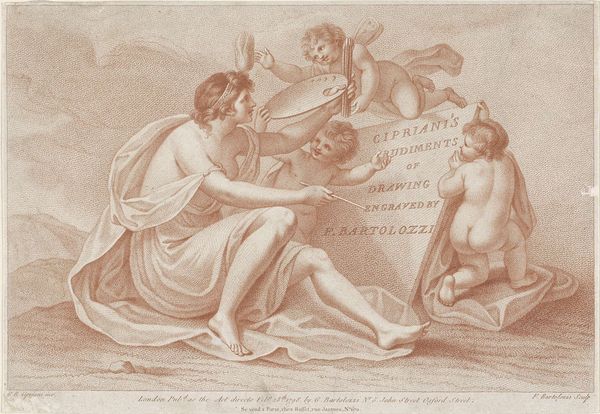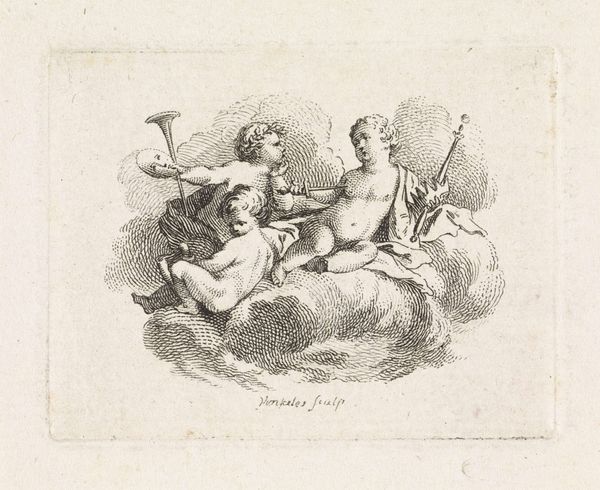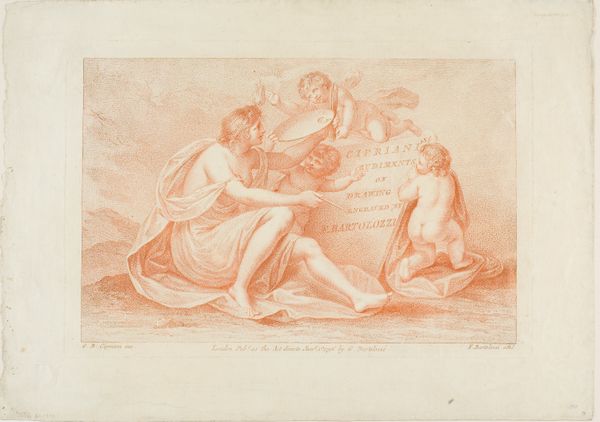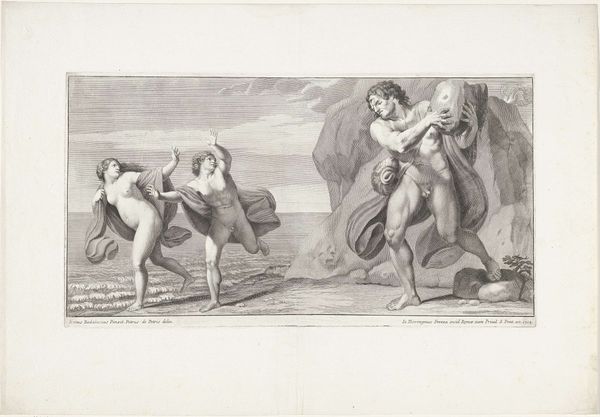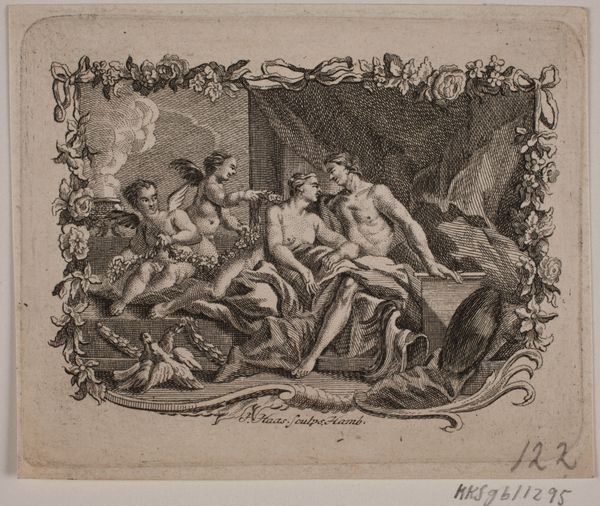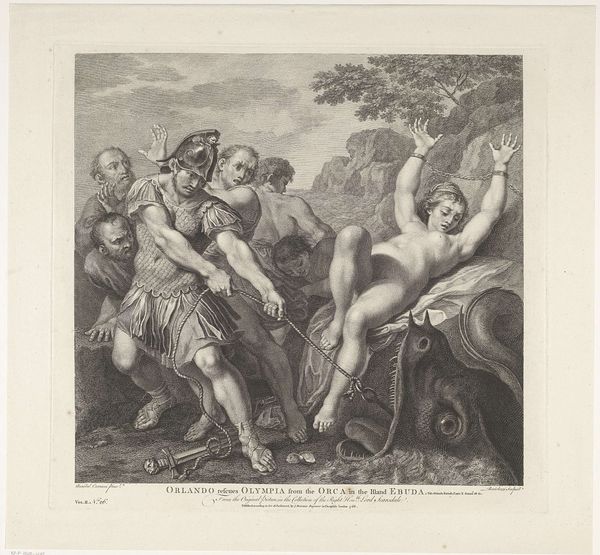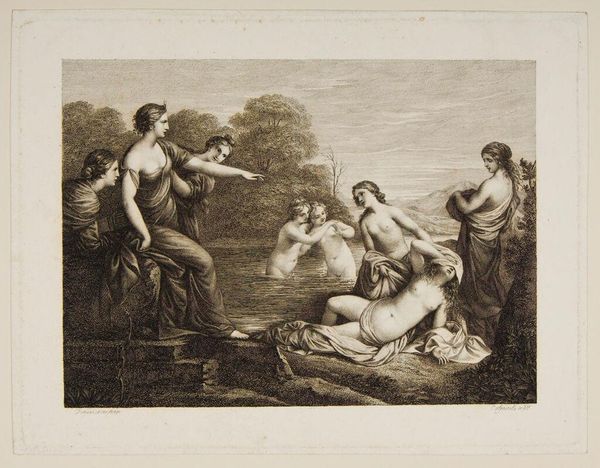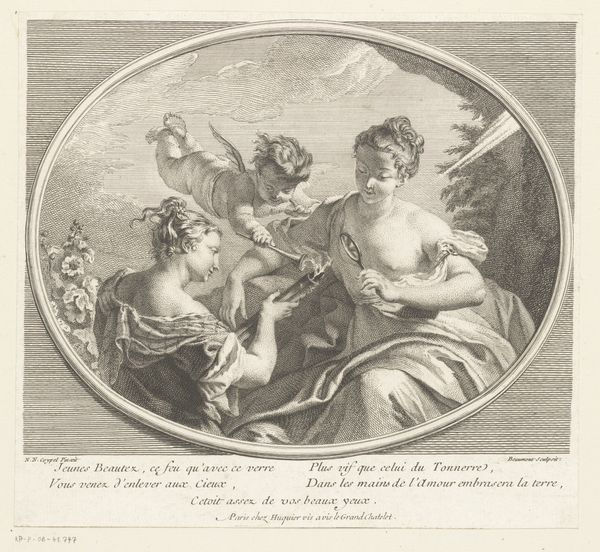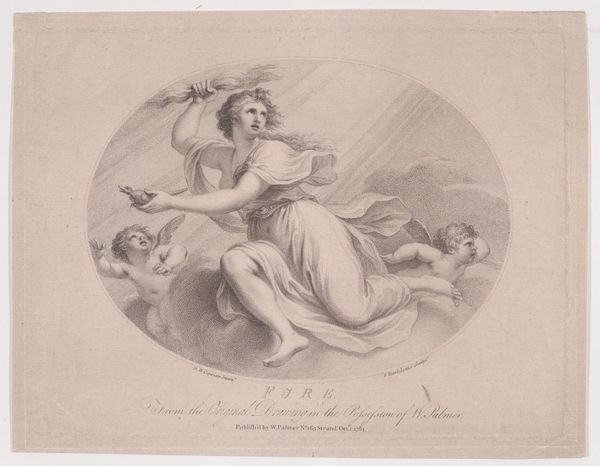
drawing, print, engraving
#
drawing
#
neoclacissism
#
allegory
# print
#
figuration
#
line
#
engraving
Dimensions: height 217 mm, width 305 mm
Copyright: Rijks Museum: Open Domain
Curator: What immediately strikes me is the overwhelming feeling of lightness, like watching a troupe of cherubic performers dancing across an airy stage. What do you think? Editor: This is "Titelprent met personificatie van de schilderkunst," possibly from 1796. Francesco Bartolozzi made this print using engraving techniques. The style nods to neoclassicism, reflecting a time when art academies solidified and sought to promote specific ideals and skills. Curator: Ah, the imprimatur of academies! But tell me more. It's got all the proper trappings – a laurel-crowned muse, those darling putti – yet there’s something genuinely graceful that elevates it beyond mere formula, I think. Editor: Exactly. It's more than just decorative. Bartolozzi uses the allegorical theme to underscore the importance of drawing as a foundation for artistic skill, which was central to academic teaching. Note the figures surrounding the title tablet: “Cipriani’s Rudiments of Drawing, engraved by F. Bartolozzi." Curator: The putti certainly are hard at work advertising drawing! It is so curious to see such seemingly whimsical cherubs supporting something that now, thanks to history, can seem so rigid and rule-bound. What could an instructor like Cipriani possibly have thought about image politics in the world beyond the studio, I wonder? Editor: It would depend heavily on his patronage and affiliations within artistic and political circles, and which stories were favored. This image served as a frontispiece. These were not simply illustrations but tools in shaping and marketing knowledge, ideas that are critical when teaching the “rudiments” of anything, especially drawing. Curator: It certainly elevates what would otherwise be simply a technical manual. Something like a visual thesis statement before you even open the book. Do you suppose aspiring artists felt burdened or inspired by such imagery? Editor: Both, most likely. Aspiring artists needed to master techniques valued and legitimized by art academies and those with money to create those stories and visual frameworks, and I guess, some may have found these skills genuinely inspiring. It all boils down to perspective, doesn't it? Curator: Indeed. On second glance, the seemingly effortless sketch of the figures here reflects hours of diligent training... Food for thought, for artist and historian alike. Editor: Absolutely, it adds another layer to consider what it means to create art.
Comments
No comments
Be the first to comment and join the conversation on the ultimate creative platform.
